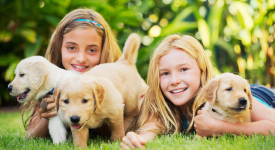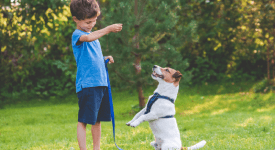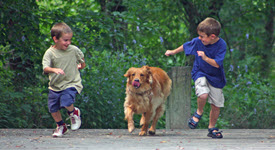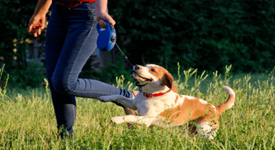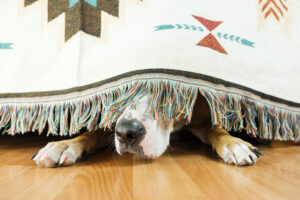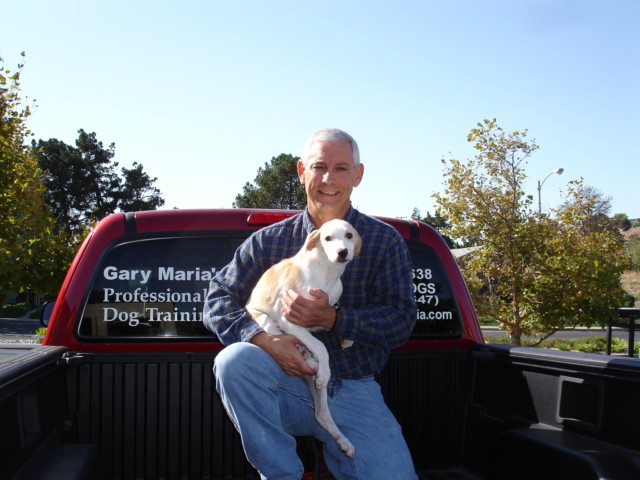If your dog gets nervous around new people, loud sounds, or unfamiliar places, you might wonder what’s going on. Maybe they bark and lunge, or maybe they tremble and try to hide. These can be signs of fear-based aggression or shyness/anxiety—two behaviors that can look similar at first but come from different emotional places.
As a pet owner, it’s important to know which is which, because how you respond can make a big difference in helping your dog feel safe and supported. Below I review key warning signs and some methods for training fear based dog aggression.
Understanding the Difference
Dogs, like people, have a range of emotional responses to the world around them. Two behaviors that are often misunderstood are fear-based aggression and shyness or anxiety.
While each one may stem from similar roots, namely fear or insecurity, each manifests very differently. Thus, each behavior requires distinct approaches for management and training.
What is fear-based aggression? How do I recognize it?
Fear-based aggression arises when a dog feels threatened and thinks that aggression is the only way to protect itself. This kind of behavior is usually defensive, not offensive.
The dog is not trying to dominate or attack unprovoked; instead, it reacts to a perceived threat or danger.
Common signs include growling, snapping, lunging, or barking when approached, especially by strangers, other animals, or in unfamiliar situations. Often, this aggression comes after subtler signs of fear have been ignored—such as lip licking, yawning, turning away, or backing up.
A fearful-aggressive dog is saying, “I’m scared—back off!” If pushed further, it may escalate to a bite to create distance.
What is shyness or anxiety in dogs? How do I recognize it?
Shy or anxious dogs, on the other hand, tend to avoid conflict. Their go-to response is usually flight, not fight.
These dogs may cower, tremble, hide, or freeze when faced with stressors. They often don’t lash out unless cornered or completely overwhelmed. Their world can feel overwhelming, leading to chronic stress if not addressed.
These dogs are communicating, “I don’t feel safe, but I don’t want to fight.”
Key Differences Summarized
Behavior
Fear-based Aggression
Shyness & Anxiety
Primary Response
Fight
Flight
Common Triggers
Threats
Close-proximity
Loud noises
Unfamiliar people or places
Body Language
Tense body
Bared teeth
Direct eye contact
Lowered body
Tucked tail
Averted gaze
Reaction to Approach
Dog may escalate if pursued
Dog is likely to retreat or freeze
Why It Matters
💡 Understanding whether a dog is reacting out of fear-based aggression or shyness and anxiety is crucial for safe and effective handling.
Punishing a fearful-aggressive dog can escalate the behavior, while pushing a shy dog too quickly can shut them down emotionally. Both cases require patience, trust-building, and often, professional guidance.
At their core, both types of behavior are cries for help—not signs of a “bad” dog. With the right support, these dogs can build confidence and learn healthier ways to interact with the world.
How You Can Help Your Dog
- Don’t punish fear: Whether your dog is growling or hiding, they’re trying to communicate. Punishment can make things worse.
- Go at their pace: Give them space and time to build confidence. Rushing a dog during this phase can backfire.
- Use positive reinforcement: Reward calm behavior, curiosity, and any signs of bravery.
- Create safe zones: A cozy crate, quiet room, or familiar routine can help your dog decompress.
- Talk to a trainer: A professional experienced in fear-based behavior can guide you and your pup through it, step by step.
Bottom Line: Fearful dogs aren’t broken—they’re scared. With patience, love, and understanding, they can learn to feel more secure and well-adjusted.
